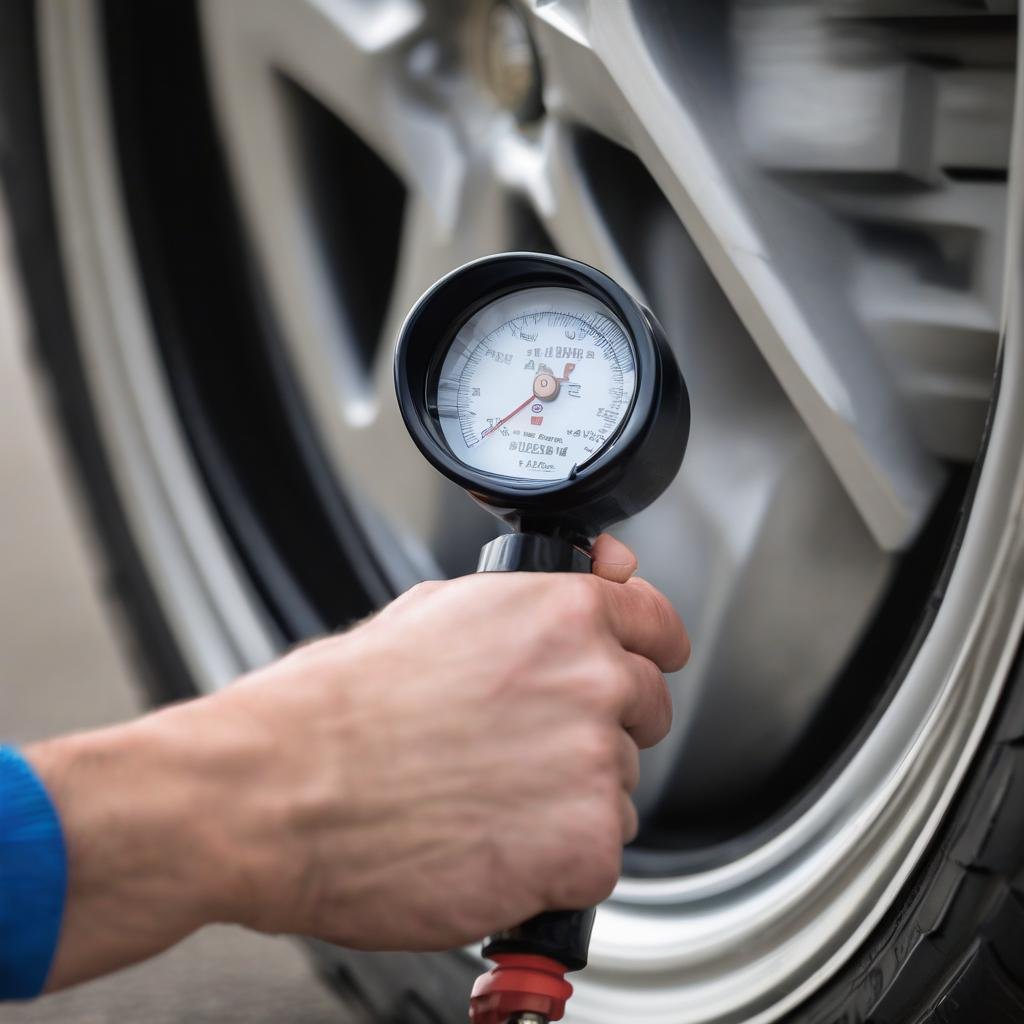
How to Check Tire Pressure
“`html
How to Check Tire Pressure: A Step-by-Step Guide
Introduction
Maintaining proper tire pressure is one of the simplest yet most important aspects of vehicle maintenance. Correct tire pressure ensures better fuel efficiency, longer tire life, improved handling, and most importantly, safer driving conditions. Despite its importance, many drivers neglect regular tire pressure checks. This comprehensive guide will walk you through the entire process of checking your tire pressure (PSI) and inflating your tires correctly.
Why Proper Tire Pressure Matters
Before we dive into the how-to, let’s understand why maintaining correct tire pressure is so crucial:
- Safety: Underinflated tires can overheat and potentially blow out, while overinflated tires reduce traction.
- Fuel Efficiency: Properly inflated tires can improve gas mileage by up to 3%.
- Tire Longevity: Correct pressure prevents uneven wear, extending tire life.
- Performance: Your vehicle handles better with properly inflated tires.
- Environmental Impact: Better fuel efficiency means fewer emissions.
What You’ll Need
Gather these simple tools before you begin:
- A quality tire pressure gauge (digital or analog)
- An air compressor (available at most gas stations)
- Your vehicle’s recommended PSI (found in owner’s manual or driver’s side door jamb)
- A pen and paper to record pressures (optional)
Step-by-Step Guide to Checking Tire Pressure
Step 1: Find the Recommended PSI
Locate your vehicle’s recommended tire pressure. This is typically found:
- On a sticker inside the driver’s side door jamb
- In your vehicle owner’s manual
- Sometimes in the glove compartment or fuel door
Important: Don’t use the PSI number on the tire sidewall – this shows the maximum pressure, not the recommended pressure.
Step 2: Check When Tires Are Cold
Tire pressure should be checked when tires are “cold” – meaning the car hasn’t been driven for at least 3 hours or has been driven less than 1 mile. Tire pressure increases as tires heat up from driving.
Step 3: Remove the Valve Cap
Find the tire’s valve stem (a small protrusion about 1-2 inches long) and unscrew the plastic cap. Keep the cap in a safe place – they’re easy to lose!
Step 4: Press the Gauge onto the Valve Stem
Firmly press your tire gauge onto the valve stem. You’ll hear a brief hiss of air – this is normal. For analog gauges, the measurement stick will pop out; digital gauges will display the reading.
Step 5: Read the Pressure
Note the PSI reading. If using an analog gauge, make sure to read the measurement where the stick stops extending. Compare this to your vehicle’s recommended PSI.
Step 6: Repeat for All Tires
Don’t forget to check all four tires (and your spare if you have one). Tire pressures can vary between tires.
How to Inflate Your Tires
If your tires are underinflated, here’s how to add air:
Step 1: Find an Air Source
Most gas stations have air pumps, some free, some requiring payment. Many newer models have digital displays that let you set your desired PSI.
Step 2: Connect the Air Hose
Press the air hose nozzle firmly onto the valve stem. You’ll hear air flowing. If using a traditional pump, add air in short bursts, checking pressure frequently.
Step 3: Check Pressure Frequently
After each few seconds of adding air, remove the hose and check the pressure with your gauge. It’s easy to overinflate, so go slowly.
Step 4: Adjust as Needed
If you overinflate, press the small pin in the center of the valve stem to release air, then recheck.
Step 5: Replace Valve Caps
Once all tires are properly inflated, screw the valve caps back on securely. These keep dirt and moisture out of the valve.
Special Considerations
TPMS (Tire Pressure Monitoring System)
Most modern vehicles have TPMS that alerts you when pressure is low. However, these systems typically only warn when pressure is 25% below recommended – by which time you’re already driving on underinflated tires. Manual checks are still important.
Seasonal Changes
Tire pressure changes with temperature – dropping about 1 PSI for every 10°F decrease in temperature. Check pressures more frequently during seasonal transitions.
Spare Tires
Don’t forget to check your spare tire periodically. A flat spare defeats the purpose of having one!
Conclusion
Checking and maintaining proper tire pressure is a quick, easy maintenance task that pays significant dividends in safety, performance, and cost savings. By following this simple monthly routine, you’ll extend the life of your tires, improve your gas mileage, and most importantly, keep yourself and your passengers safer on the road. Make tire pressure checks part of your regular vehicle maintenance schedule – your wallet and your safety will thank you.
FAQ
How often should I check my tire pressure?
At least once a month and before long trips. Also check when temperatures change significantly.
Is it bad to drive with overinflated tires?
Yes, overinflation reduces traction, causes uneven wear (center of tread wears faster), and makes for a harsher ride.
Can I check tire pressure when tires are hot?
You can, but the reading will be higher than cold pressure. For accuracy, check when cold or add 4-5 PSI to the recommended cold pressure if tires are warm.
What if my tires keep losing pressure?
Consistent pressure loss could indicate a slow leak or valve stem issue. Have a tire professional inspect it.
“`
